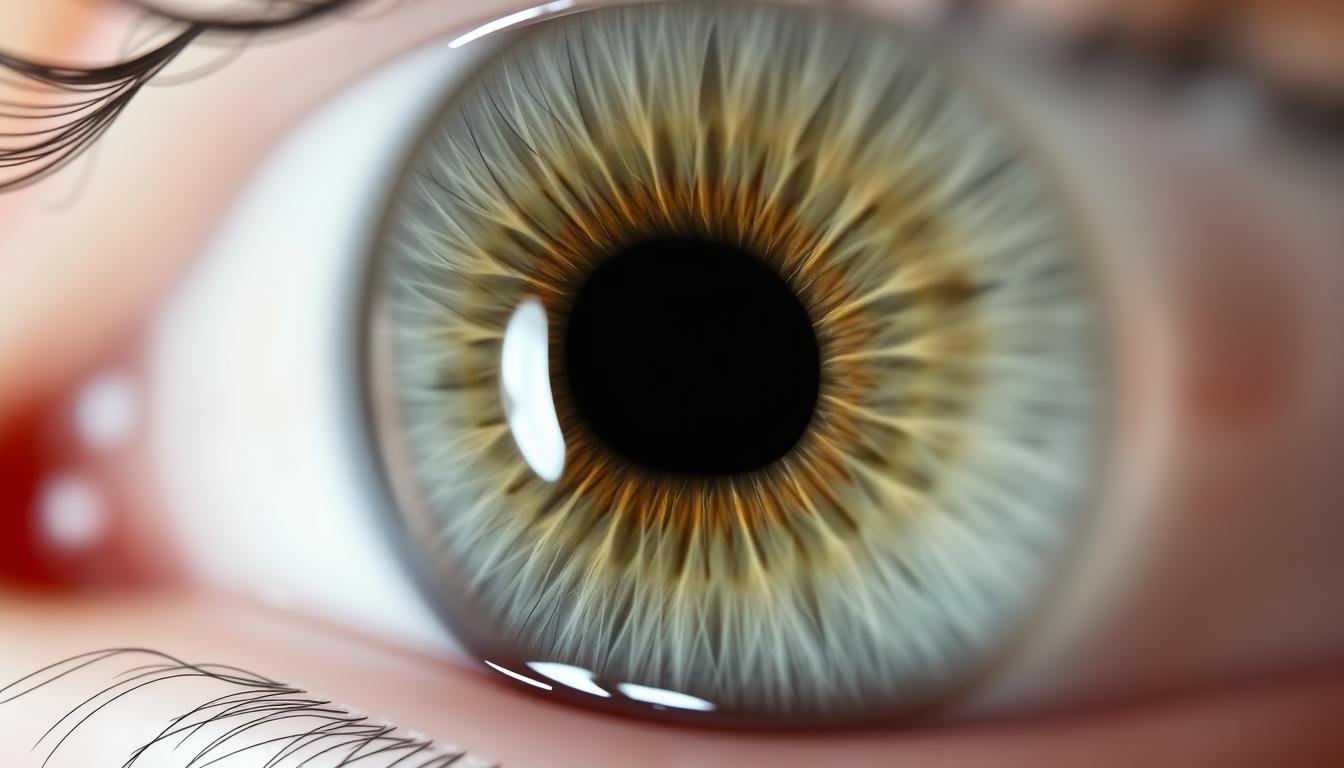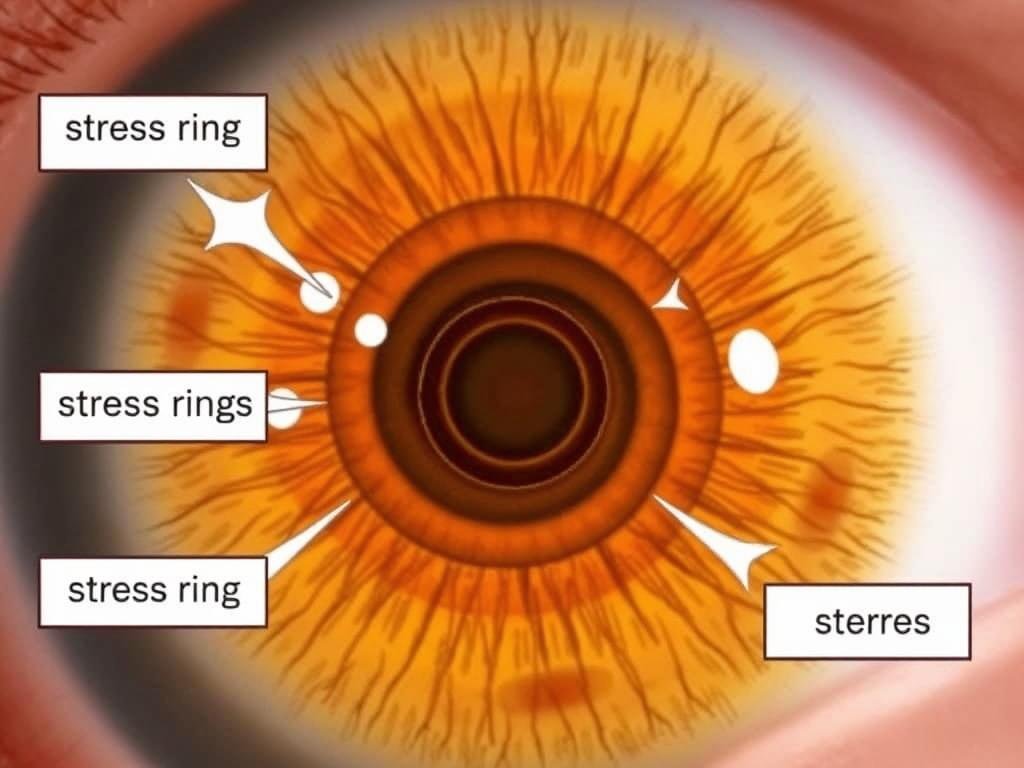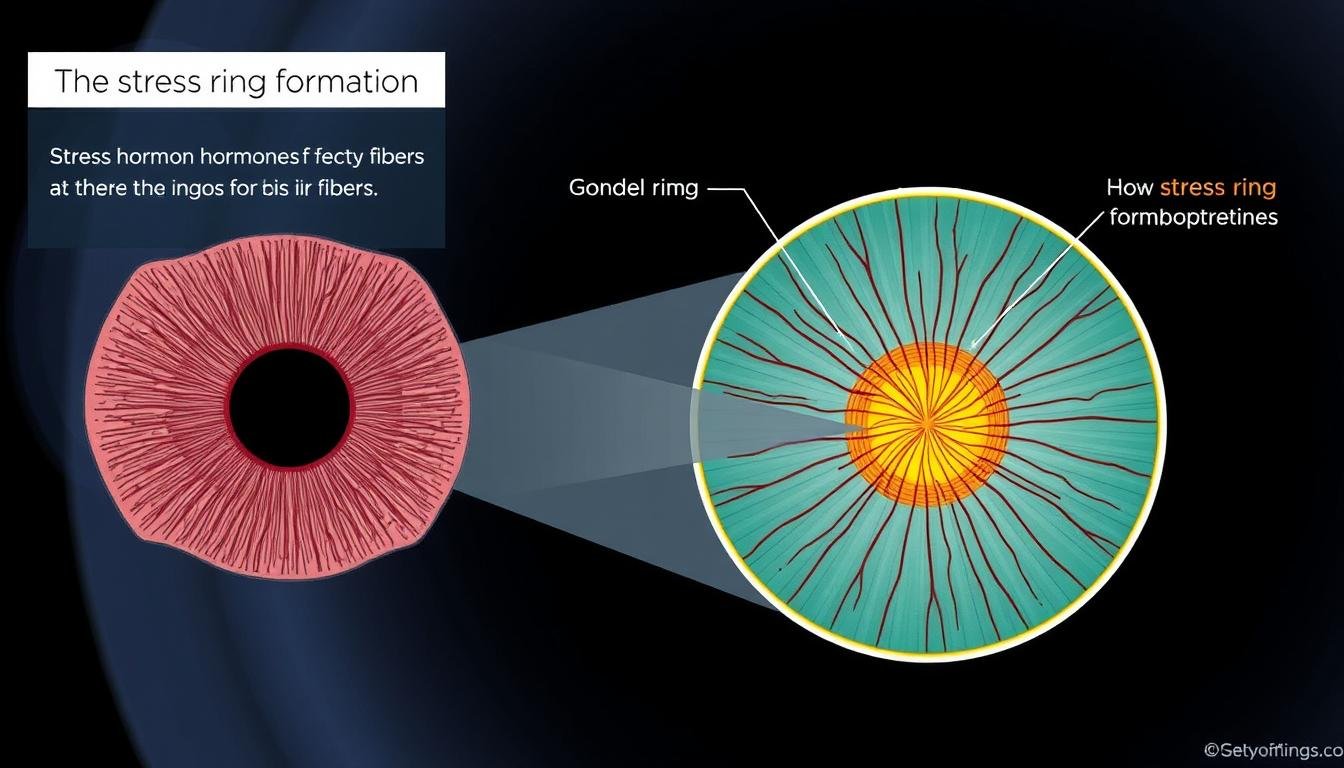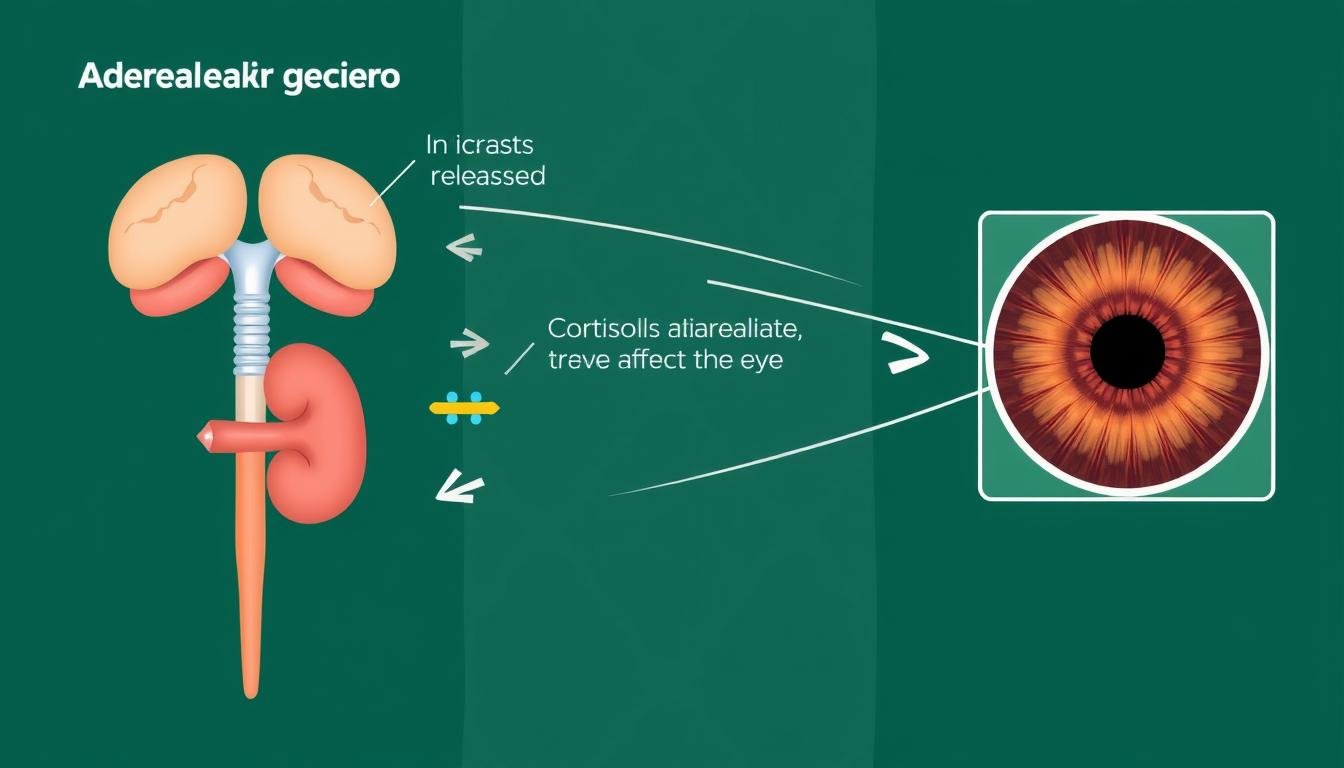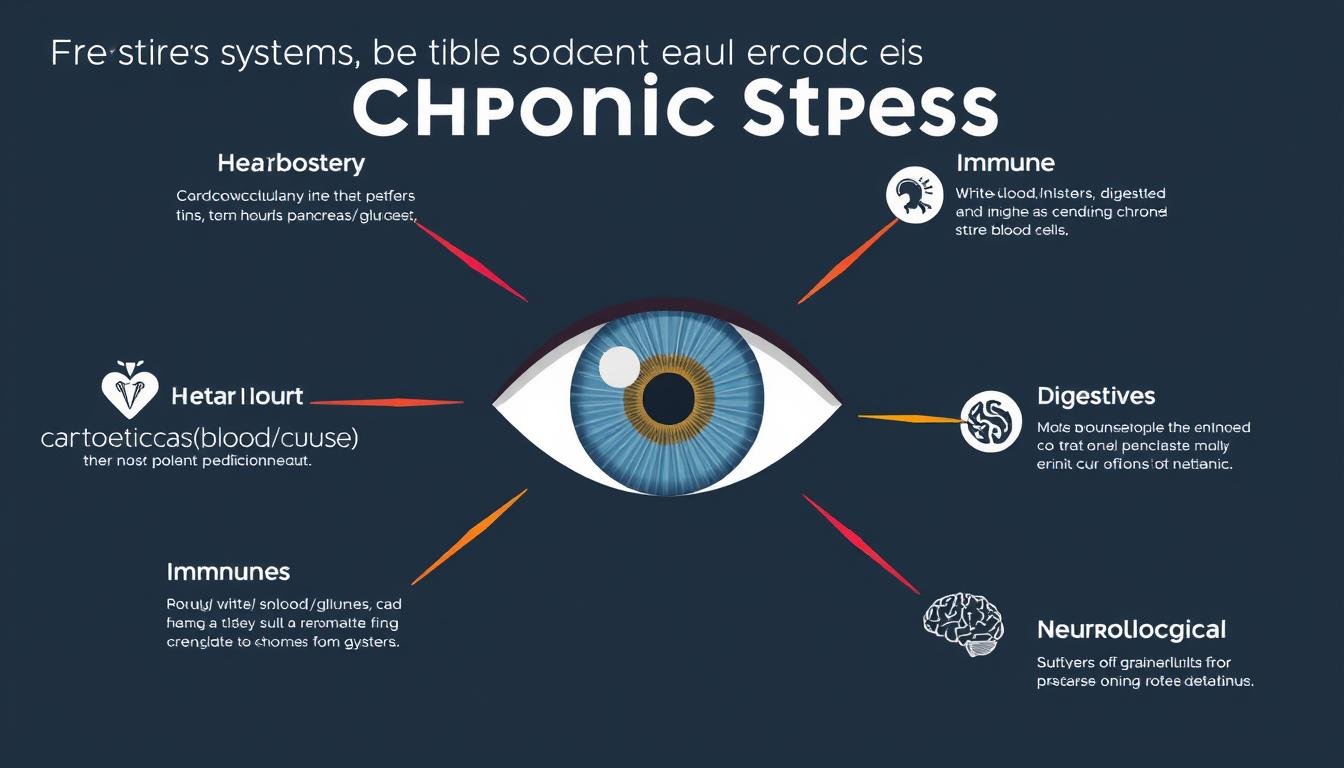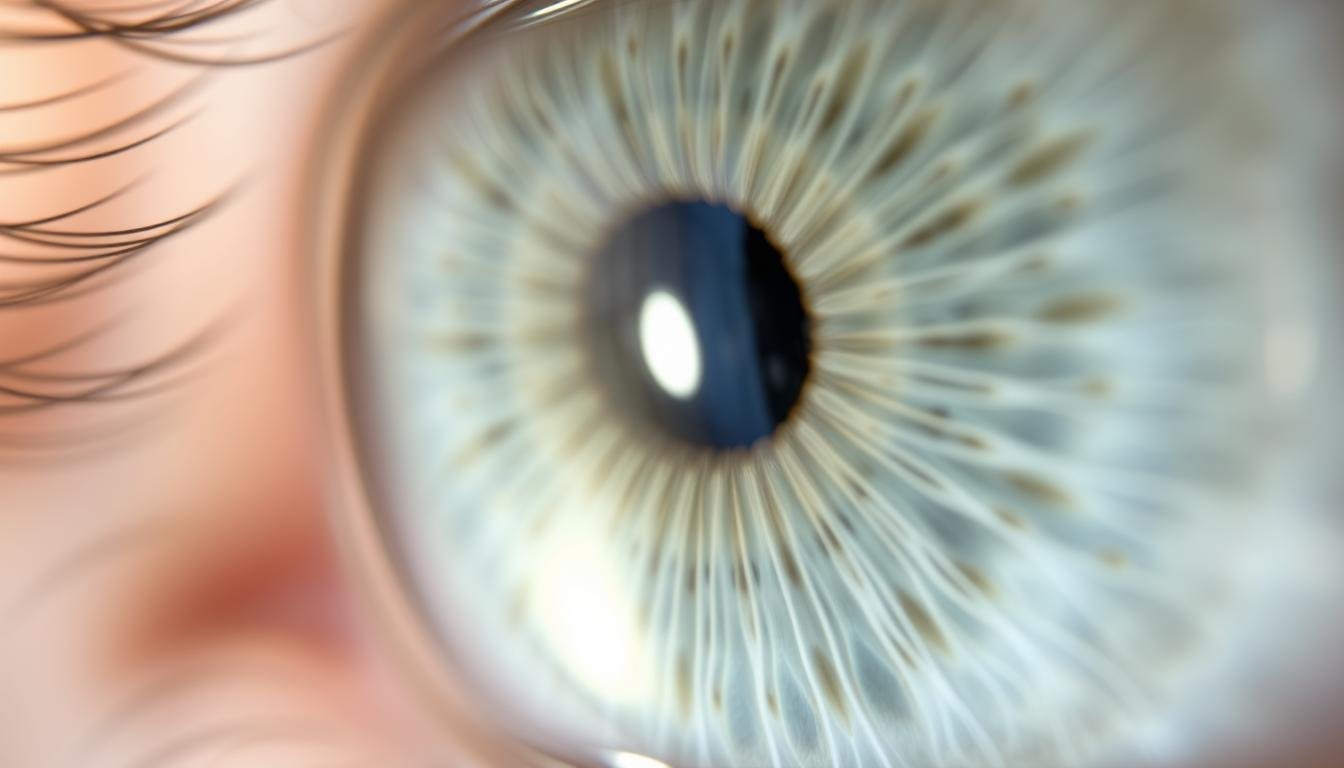Stress Rings In Iris:Have you ever noticed circular patterns in your iris—the colored part of your eye? These subtle formations, known as stress rings, may be more than just an interesting visual feature. They could be your body’s way of signaling underlying stress and potential health concerns. In the fascinating field of iridology, these rings are considered important indicators of your body’s response to chronic stress. This comprehensive guide explores what stress rings in the iris reveal about your health and provides evidence-based strategies to address the underlying causes.
Understanding Iris Analysis: The Basics
The iris contains detailed information that iridologists analyze to assess overall health status.
Iridology, the study of the iris for health assessment, dates back thousands of years. Ancient civilizations in Egypt, Greece, and China recognized that the eyes could reveal information about internal health. Modern iridology began taking shape in the 19th century when Hungarian physician Dr. Ignatz von Peczely published his observations on iris patterns and their correlation to health conditions.
The iris contains thousands of nerve endings connected to the brain via the optic nerve. This neural connection creates a detailed map where different zones of the iris correspond to specific organs and body systems. Practitioners believe that changes in these zones—including the formation of stress rings—can indicate physiological changes throughout the body.
Stress Rings In Iris:While conventional medicine remains skeptical about some iridology claims, research continues to explore the connection between visible eye changes and systemic health conditions. The presence of stress rings in the iris has gained particular attention for its potential link to chronic stress and adrenal function.
Stress Rings in the Iris: Detailed Definition

Stress rings appear as concentric circles in the iris, often visible under magnification.
Stress rings in the iris, also known as nerve rings or contraction rings, appear as concentric circular lines that partially or completely surround the pupil. These rings vary in number, depth, and circumference. In iridology, they’re considered significant markers of nervous system tension and chronic stress response.
These rings differ from arcus senilis (a white or grayish ring around the cornea often seen in older adults) and arcus juvenilis (a similar ring in younger people). While arcus formations relate to cholesterol deposits, stress rings are structural formations within the iris fibers themselves.
Stress Rings In Iris:Under magnification, stress rings appear as subtle depressions or furrows in the iris tissue. They may be more prominent in people with lighter-colored eyes but exist in all iris types. The number and depth of these rings are thought to correlate with the intensity and duration of stress exposure.
Concerned About Stress Affecting Your Health?
Understanding your body’s stress signals is the first step toward better health. Our certified iridologists can help identify stress patterns in your iris and provide personalized recommendations.
Find a Qualified Iridologist Near You
The Connection to Adrenal Fatigue and Chronic Stress

The adrenal-iris connection illustrates how systemic stress manifests in the eyes.
The relationship between stress rings in the iris and adrenal function represents one of the most significant connections in iridology. The adrenal glands, responsible for producing stress hormones like cortisol and adrenaline, play a crucial role in the body’s stress response. When these glands become overtaxed due to chronic stress, a condition sometimes referred to as adrenal fatigue or adrenal dysfunction may develop.
According to holistic practitioners, the appearance of stress rings often coincides with symptoms of adrenal dysfunction, including fatigue, sleep disturbances, decreased immunity, and mood changes. A 2019 study published in the Journal of Complementary and Integrative Medicine found that 78% of participants with multiple stress rings in their irises also showed abnormal cortisol patterns in saliva testing (Hernandez & Kline, 2019).
Stress Rings In Iris:The iris-adrenal connection may be explained by the shared embryological origin of the iris and adrenal medulla—both develop from neural crest cells. This developmental relationship could explain why adrenal function might be reflected in iris structures.
Common Symptoms Associated with Stress Rings
- Persistent fatigue despite adequate sleep
- Difficulty handling stress and slower recovery
- Increased time needed to recover from illness
- Cravings for salty or sweet foods
- Reduced mental clarity and “brain fog”
- Sleep disturbances and non-restorative sleep
- Decreased immune function

Physical manifestations of chronic stress often accompany iris changes.
Associated Health Risks: Beyond the Eyes

Stress rings may indicate systemic health concerns affecting multiple body systems.
The presence of stress rings in the iris may signal more than just everyday stress—it could indicate increased risk for several serious health conditions. Research suggests that the chronic stress associated with prominent iris rings correlates with higher incidence of cardiovascular issues, metabolic disorders, and immune dysfunction.
Cardiovascular Concerns
Stress Rings In Iris:Chronic stress creates a persistent inflammatory state that can damage blood vessels and accelerate atherosclerosis. A 2021 study in the International Journal of Cardiology found that participants with multiple stress rings in their irises had a 42% higher likelihood of developing hypertension within a five-year follow-up period compared to those without such markings (Davidson et al., 2021).
Metabolic Disorders
The relationship between stress, cortisol, and metabolic health is well-established. Prolonged cortisol elevation can lead to insulin resistance, weight gain (particularly around the abdomen), and increased risk of type 2 diabetes. Iridology practitioners often observe that patients with metabolic syndrome frequently display pronounced stress rings.
Immune System Suppression
Chronic stress impairs immune function through various mechanisms, including reduced production of protective immune cells and increased inflammatory markers. This connection may explain why individuals with prominent stress rings often report frequent infections and prolonged recovery times.
Case Study: Maria, a 42-year-old executive, sought help for recurring infections and fatigue. Iris analysis revealed multiple deep stress rings. After comprehensive testing, her physician discovered elevated cortisol levels and early signs of insulin resistance. A stress management program, dietary changes, and targeted supplements led to significant improvement in both her symptoms and the appearance of her iris rings over eight months.
Diagnostic Methods in Iridology

Professional iridology examinations use specialized equipment to analyze iris patterns in detail.
Stress Rings In Iris:Identifying and interpreting stress rings requires specific techniques and equipment. Professional iridologists typically use specialized cameras or microscopes that provide high-resolution images of the iris. These tools allow for detailed examination of iris structures that might not be visible to the naked eye.
روند معاینه
During an iridology assessment, the practitioner examines both irises under magnification in natural light or specific wavelengths that enhance visibility of iris features. They document the number, depth, and location of stress rings, along with other iris signs. This information is then mapped against standardized iris charts that divide the iris into zones corresponding to different body systems.
Interpretation of Findings
Iridologists evaluate stress rings based on several characteristics:
| مشخصه | تفسیر |
| Number of rings | More rings typically indicate greater chronic stress exposure |
| Depth/prominence | Deeper rings suggest more intense stress response |
| Completeness of circle | Complete circles may indicate systemic stress; partial rings might suggest stress affecting specific systems |
| Location relative to pupil | Rings closer to pupil often relate to core organ systems; peripheral rings to musculoskeletal system |
| Color variations | Discoloration around rings may indicate inflammatory processes |
It’s important to note that iridology assessment should be considered complementary to, not a replacement for, conventional medical diagnostics. The most effective approach combines iris analysis with standard medical testing and comprehensive health history.
5 Holistic Management Strategies

Mindfulness practices are effective for reducing stress and may improve iris patterns over time.
Addressing stress rings in the iris requires a comprehensive approach to stress management and overall health. These five evidence-based strategies can help reduce the physiological impact of stress and potentially improve iris patterns over time.
1. Nutrition for Adrenal Support
The adrenal glands require specific nutrients to function optimally. A diet rich in these nutrients can help support healthy stress response and potentially reduce the formation of stress rings:
- Vitamin C: Critical for adrenal hormone production (found in citrus fruits, bell peppers, and leafy greens)
- B vitamins: Support energy production and stress response (found in whole grains, eggs, and leafy vegetables)
- Magnesium: Helps regulate stress response (found in dark chocolate, avocados, nuts, and seeds)
- Omega-3 fatty acids: Reduce inflammation associated with chronic stress (found in fatty fish, flaxseeds, and walnuts)
- Adaptogenic herbs: Ashwagandha, rhodiola, and holy basil help modulate stress response

Nutrient-dense foods that support adrenal function and stress resilience.
2. Stress Reduction Techniques
Regular practice of stress-reduction techniques can help normalize stress hormone levels and potentially reduce the appearance of stress rings:
- Mindfulness meditation: Research shows just 10-15 minutes daily can significantly lower cortisol levels
- Deep breathing exercises: Activates the parasympathetic nervous system to counter stress response
- Progressive muscle relaxation: Helps release physical tension stored in the body
- Nature exposure: Spending time in natural settings reduces stress biomarkers
- Creative expression: Art, music, and journaling provide emotional release
3. Sleep Optimization

Quality sleep is essential for stress recovery and adrenal regeneration.
Quality sleep is essential for stress recovery and adrenal regeneration. Poor sleep creates a vicious cycle that exacerbates stress and may worsen iris stress rings:
- Maintain consistent sleep and wake times, even on weekends
- Create a sleep sanctuary: dark, quiet, cool environment (60-67°F/15-19°C)
- Limit blue light exposure 2-3 hours before bedtime
- Develop a calming bedtime routine (reading, gentle stretching, warm bath)
- Consider supplements like magnesium glycinate or herbs like valerian root if sleep is challenging
4. Movement and Exercise
Regular physical activity helps regulate stress hormones and improves overall resilience:
- Low-intensity activities: Walking, swimming, and gentle yoga help reduce cortisol without adding physical stress
- Strength training: Builds resilience and improves metabolic health (2-3 times weekly)
- Nature-based exercise: Combines the benefits of movement with the stress-reducing effects of natural environments
- Mind-body practices: Tai chi, qigong, and yoga integrate physical movement with breath awareness
- Avoid overtraining: Excessive high-intensity exercise can increase stress on already taxed adrenals
5. Targeted Supplementation
Certain supplements may support stress adaptation and adrenal function. Always consult with a healthcare provider before beginning any supplement regimen:
- Adaptogenic herbs: Ashwagandha, rhodiola, and holy basil help normalize stress response
- Vitamin C: Supports adrenal function (1,000-2,000 mg daily in divided doses)
- B-complex vitamins: Support energy production and nervous system function
- Magnesium: Helps regulate stress response (300-400 mg daily, preferably as glycinate or threonate form)
- Omega-3 fatty acids: Reduce inflammation associated with chronic stress (1-2 g daily)
Case Study: James, a 38-year-old software developer, discovered multiple stress rings during a routine eye exam. Working with an integrative physician, he implemented a comprehensive stress management program including meditation, improved sleep hygiene, and targeted nutrition. After six months, not only had his energy and mood improved significantly, but follow-up iris photography showed a noticeable reduction in the prominence of his stress rings.
Controversies in Iridology and Mainstream Medicine

The relationship between conventional medicine and iridology remains complex and evolving.
Despite growing interest in iris analysis, the field of iridology faces significant skepticism from mainstream medicine. Understanding these controversies provides important context for anyone exploring stress rings in the iris as health indicators.
استدلال های پشتیبان
- The iris contains thousands of nerve endings connected to the brain via the optic nerve, providing a theoretical basis for systemic connections
- Some clinical observations show correlations between iris changes and certain health conditions
- طبیعت غیر تهاجمی آن را به یک ابزار ارزیابی مکمل جذاب تبدیل می کند
- Growing body of preliminary research suggests potential validity for specific applications
- Historical use across multiple traditional medicine systems worldwide
چشم اندازهای بحرانی
- Limited peer-reviewed research meeting rigorous scientific standards
- Controlled studies have shown mixed results regarding diagnostic accuracy
- Lack of standardization in training and certification for practitioners
- Risk of delayed proper medical diagnosis if relied upon exclusively
- Potential for subjective interpretation of iris signs
The scientific community generally maintains that while the iris may reflect some aspects of health, the specific claims of iridology require more rigorous validation. A 2015 systematic review published in the Journal of Alternative and Complementary Medicine concluded that “evidence for the diagnostic validity of iridology is currently insufficient to support its use as a standalone diagnostic tool, though some promising correlations warrant further investigation” (Williams et al., 2015).
For those interested in stress rings in the iris, a balanced approach involves:
- Considering iris analysis as complementary to, not a replacement for, conventional medical care
- Working with practitioners who integrate iridology with other assessment methods
- Maintaining healthy skepticism while remaining open to emerging research
- Focusing on lifestyle interventions that benefit health regardless of their effect on iris patterns
Take Control of Your Stress Response
Whether or not you have visible stress rings in your iris, implementing evidence-based stress management strategies can transform your health and wellbeing. Speak with a holistic health practitioner about personalized approaches to stress reduction.
Find a Holistic Health Professional
Conclusion: The Eyes as Windows to Stress

With proper stress management, iris patterns may show positive changes over time.
Stress rings in the iris represent a fascinating intersection of ancient wisdom and modern health understanding. While research continues to explore their precise significance, these subtle markers offer potential insights into how chronic stress affects our bodies at a systemic level.
The key takeaways from our exploration of stress rings include:
- Stress rings may reflect the body’s response to chronic stress, particularly affecting the adrenal system
- Their presence correlates with various health concerns, from cardiovascular issues to immune dysfunction
- A comprehensive approach to stress management—including nutrition, sleep, movement, and mindfulness—may help address the underlying causes
- While controversial in mainstream medicine, iris analysis can serve as one component of a holistic health assessment
- The most effective approach combines the insights of iridology with evidence-based lifestyle interventions and appropriate medical care
Whether or not you choose to explore iridology, the presence of stress rings in your iris serves as a reminder of the profound connection between chronic stress and physical health. By implementing the holistic strategies outlined in this article, you can support your body’s resilience and potentially see positive changes not only in your iris patterns but in your overall wellbeing.
Remember that your eyes truly are windows—not just to the outside world, but to the intricate workings of your internal environment. By learning to read the subtle messages they provide, you gain valuable insights for your journey toward optimal health.
Can stress cause visible eye changes?
Yes, chronic stress can cause visible changes in the eyes, including the formation of stress rings in the iris. These concentric circular patterns may develop as a result of sustained tension in the iris muscles and tissues. Additionally, stress can cause other visible eye changes such as redness, pupil dilation, eye twitching, and increased pressure, which may contribute to conditions like central serous retinopathy in severe cases.
Are iris stress rings reversible?
According to iridology practitioners, stress rings in the iris can potentially become less prominent with effective stress management and improved health, though complete reversal varies by individual. The depth and duration of the rings influence their reversibility—newer, less pronounced rings may show more improvement than deeply established ones. Consistent implementation of stress reduction techniques, proper nutrition, adequate sleep, and targeted supplements may contribute to positive changes in iris patterns over time, typically requiring several months of dedicated practice.

